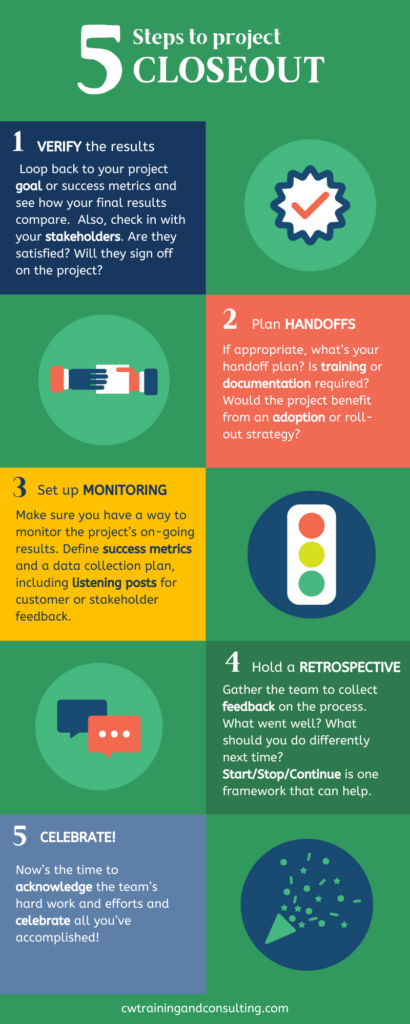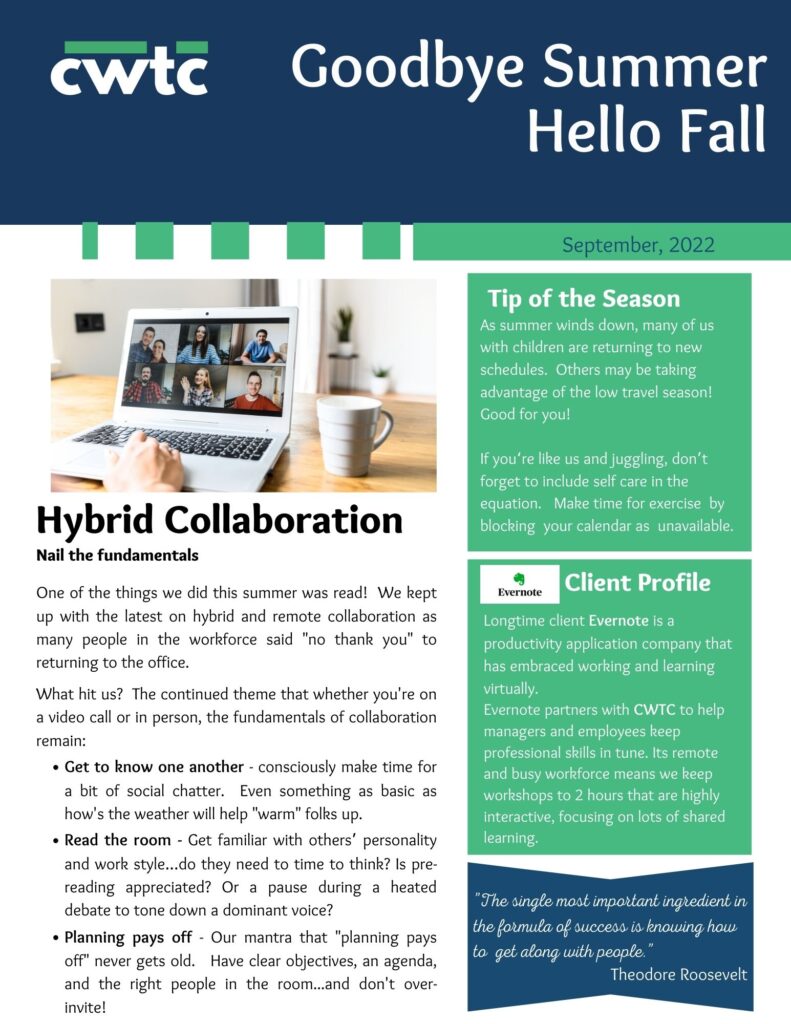We love to apply project management concepts to everyday life. As we often say, “Life’s a Project!”. As we launch a new year, you might take a moment to do a "project closeout" on 2024, whether you’ve got a specific project in mind, or just general work effort, or even your personal life. How was the year? Did you accomplish what you set out to do? What did you learn along the way?
We like to borrow from the Project Closeout phase of project management for help in thinking through these questions. Maybe it can be helpful to you too!

Find this and other free resources at cwtrainingandconsulting.com and if you enjoyed these tips, sign up for our newsletter so you don’t miss a future post or learning event announcement.
CW Training and Consulting specializes in hands-on, interactive project management skills boosting workshops - either off the shelf or customized to your needs. Contact Us and we will help you find the right learning solution for you and your business.




